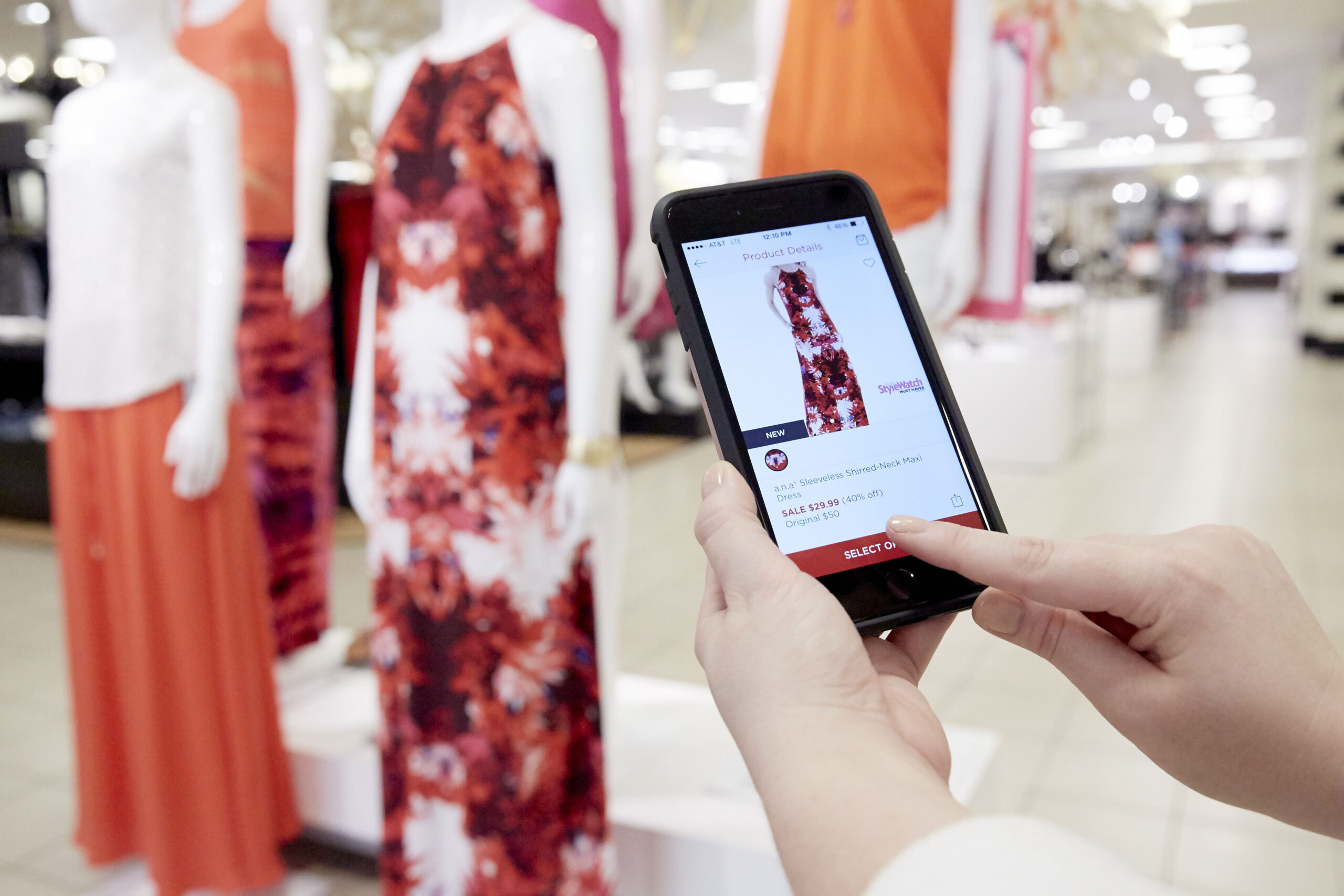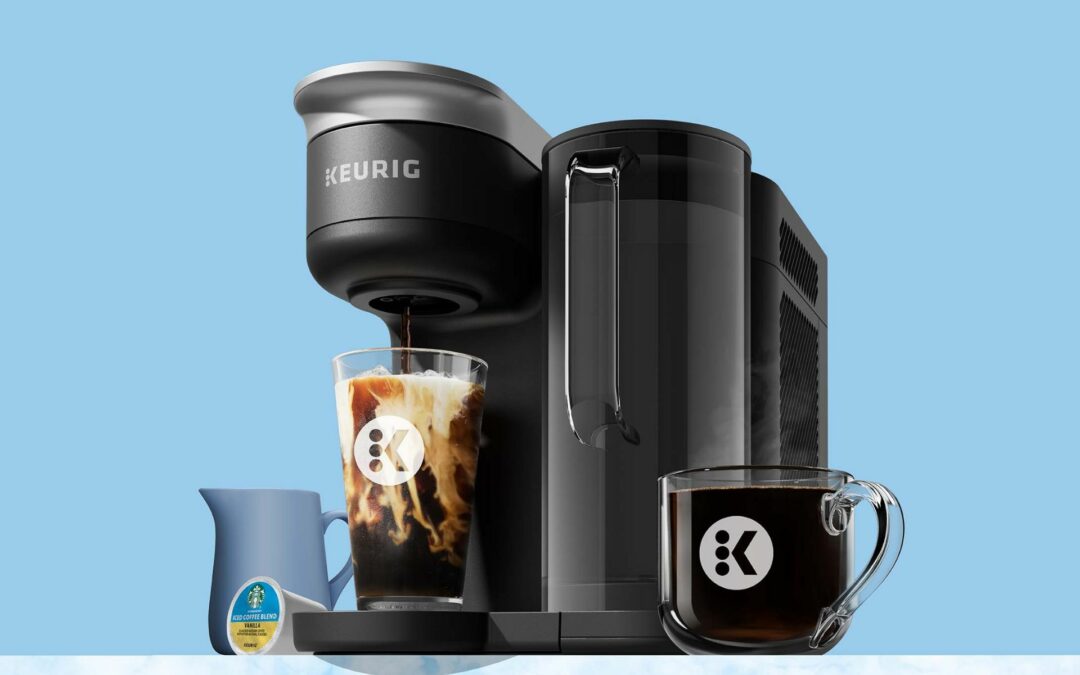JCPenney is putting $1 billion back into the business in an effort to boost the omnichannel customer experience — including technology and physical store upgrades— elevate merchandising and advance supply chain operations.
Katie Mullen, JCPenney chief customer officer, told HomePage News the initiatives are aimed at enhancing customer engagement and experience.
Investment in the home business is a key part of the initiative, with the company looking to provide shoppers with a broad yet curated presentation of goods that are easier to shop in stores and online. The company intends to use the investment to regain its status as a premier online resource for housewares and home furnishings.
JCPenney promoted Mullen to chief customer officer from chief digital officer in April. Before joining JCPenney, she was chief digital officer at the Neiman Marcus Group. Mullen is helping to execute JCPenney’s self-funded investment plan, which aims at enhancing the retailer’s value proposition and general customer satisfaction as a means to fuel long-term growth and increase customer loyalty and shopping frequency.

Katie Mullen, Chief Customer Officer, JCPenney
The company will invest the $1 billion from now through the 2025 fiscal year to further improve customer experience in more evident ways, such as making it easier for consumers to find the right merchandise, and in less evident ways, such as enhancing operational efficiencies so customers get deliveries faster.
However, the billion-dollar initiative isn’t an isolated development, Mullen said, noting JCPenney already has made significant investments that are increasingly visible to shoppers, as in the case of the JCPenney Beauty rollout.
The money spent through 2025 is earmarked to enhance digital capabilities to ease the shopping experience with improved search functionality and easier access to more detailed product information and reviews. In JCPenney stores, the money will go to refining the look and feel while providing better technology and associate tools, as well as physical improvements. A new point-of-sale system is designed to effectively integrate with inventory. Revising in-store Wi-Fi networks will deliver faster, more reliable connections for customers and associates, the company stated, with 100 stores already having integrated the augmented capabilities. New inventory management systems are planned to support greater accuracy in decision-making and execution efficiency to help JCPenney satisfy customers’ unique needs, fulfill orders faster and reduce delivery times. In addition, the investments will aid in JCPenney’s ability to provide customized and localized product assortments consistently, Mullen said.
The $1 billion investment is part of an ongoing process. Mullen said, “One of the big things that we look at JCPenney, and, certainly, when I joined the company just about two years ago, it was one of the first things I wanted to understand: Just who is our customer and how are they shopping? We started to do a lot of customer research really trying to understand quantitatively and qualitatively: What was our customer up to and what were they looking for?”
Something that became obvious was customer aspiration for a trusted retail partner to help each find desired products at affordable prices.
“All of that set the stage for the investment choices that we’re making, which are largely focused on improving the customer experience,” Mullen said. “We have customers that shop us single channel, whether that’s store or online, and we have many customers that shop us in a multi-channel or omnichannel way, especially in the home category because of the unique dynamics of the purchase decisions being heavily researched purchases.”
Back Home
Although she wouldn’t get into specifics about how company initiatives might change the home department, Mullen said the investments will enrich the home operation, particularly online, for which JCPenney was an early e-commerce leader.
“From my perspective, we expect to continue to have a distorted focus on e-commerce within the home business,” Mullen said. “We’re probably 15 percentage points higher penetration in e-commerce for our home businesses than for any other within JCPenney, and we expected to have that higher penetration. Within our e-commerce business, we do have a very meaningful drop ship and factory ship. So we expect to continue to invest in that strategy because it’s been highly successful for us and many of our partners.
“My expectation is that the fundamental shape of our home business is not going to change in terms of e-commerce penetration and factory ship penetration,” Mullen continued. “But the big thing we’re trying to do is bring back some of the excitement and elevation in the way that we are able to deliver and experience around our assortment. I think our assortment is incredibly strong but our experience has not yet matched that in the last few years. That’s what we’re really trying to close the gap on, and we know customers are noticing and paying us back for those investments we’ve made up to this point in home. There’s an enormous potential for us for home growth and reestablishing that sort of historical leadership position.”
Still, JCPenney isn’t ignoring in-store shopping when it comes to home products. To a significant extent, Mullen says, the point revolves around purchase occasion. Store customers often want to find and pick up something off the shelf and walk out to satisfy immediate needs. Small electrics and other appliances can be grab-and-go items for a lot of JCPenney customers. Then, many consumers want to be able to see and compare soft home items to ensure they’re compatible with their needs and home decor.
“There is a very interactive shopping experience that happens in so many ways, especially in the home business,” Mullen says.
JCPenney is working to develop the right balance regarding in-store and digital shopping experience. In home, that includes adding some categories that an earlier management team had effectively dropped, such as tabletop. Now, the company is figuring out how to best integrate those into their omnichannel plans.
Mullen asked, “Does the customer want plates to take out with them, or do they want to pick them and ship them to their homes?”
Tabletop isn’t the only category subject to such thought.
“Is the customer really looking for the same dynamic with seasonal decor?” Mullen asked.
“We’ve been experimenting on how much inventory do you have in the store versus how much you have positioned in a way that you can get that to customers within a couple of days,” she added. “We’re learning across different types of customers and different categories. But it’s been a pretty consistent focus for us.”
My expectation is that the fundamental shape of our home business is not going to change in terms of e-commerce penetration and factory ship penetration. But, the big thing we’re trying to do is bring back some of the excitement and elevation in the way that we are able to deliver and experience around our assortment. I think our assortment is incredibly strong but our experience has not yet matched that in the last few years. That’s what we’re really trying to close the gap on, and we know customers are noticing and paying us back for those investments we’ve made up to this point in home. There’s an enormous potential for us for home growth and reestablishing that sort of historical leadership position.
– Katie Mullen, Chief Customer Officer, JCPenney
Given the market is still working its way through developments related to the COVID-19 pandemic and its effect on the market, taking a fresh look at consumer behavior makes sense to address current needs and to get a better handle on what permanent changes may continue to affect how consumers shop. Mullen said change isn’t all down to the pandemic, although there’s little COVID-19 didn’t affect. Technology and how people relate to it is changing as consumers become more demanding about what they want from online shopping, she said.
To quietly make the online shopping experience more satisfying, JCPenney is investing a lot behind the scenes, Mullen said, in things customers might not notice directly but should result in overall improved shopping visits. Online JCPenney customers can already benefit from upgrades.
“Over the last year, we’ve overhauled the front end of the site experience to make that more engaging for the customer, and we’ve done that quite successfully,” Mullen said. “The customer sees that and is voting for that experience.”
Still, she says, the company is determined to keep making progress.
“One of the biggest ones for us is our ability to help customers find product that is the right product for them. So you’ll see our investment starting to really pay off in improved navigation, improved search experience, improved product detail information. We can see that our customers are not always finding the product that they want in their search experience and in our navigation experience, even when we have that product.
“We think there are some real, meaningful opportunities to improve what I would describe as product findability,” Mullen said. “At the same time, we’re going to continue to enhance all of the information that customers can see about how that product goes with other products that they might already own, or seeing and engaging with the best information about the product we can offer.”
JCPenney also has been revamping what Mullen called knowledge assistance.
“We have all kinds of information to help our customers,” she said. “How to buy a mattress; how to take care of your mattress; how to think about measuring for your window treatments. Our customer really values that type of guidance.”
JCPenney will continue to augment the customer’s ability to use its resources during the shopping visit, in-store or virtual.
“That’s one of the things we will also be enhancing to continue to make it easy for them to find the right products at the right times,” Mullen said.
JCPenney is trying to strike a balance between encouraging the online shopper to purchase and helping them purchase higher price-point products that tend to be more thoroughly considered. The JCPenney e-commerce site mixes merchandise that consumers will likely research with items that qualify as impulse purchases. For most consumers, the decision to purchase a pair of socks only requires a couple of minutes, so making the purchase simple and quick is a route to conversion. But that isn’t true of other categories for which JCPenney wants to help shoppers make decisions by supporting their research for, say, furniture or even engagement rings.

JCPenney Home Section
“If we focus only on driving to immediate conversion, then we miss the reality that most customers in these considered purchases are thinking about and coming back to and learning more about the purchase five, six, in some cases, ten times before they actually have the right information that tells them is this the right product and the right product for me,” Mullen said. “We’re getting to the point where we can actually enrich that experience for the customer, so they’ve thought about something, maybe they’ve looked at that product three or four times but haven’t put it into their bag yet. “That’s where this investment comes in, is to understand where a customer is in that purchase journey so that we can be able to suggest the next right type of information for them,” she continued. “So if they’ve looked at very functional information, like the dimensions of a product or the care instruction on something, what’s the next right type of information to offer to that customer to see if that’s what they’re looking for now in their purchase journey? It’s a very nuanced balance.”
As it applies technology to service the customer, JCPenney can better suit the individual customer.
“When a customer is an omnichannel customer today, we can see all their behavior, what size they’ve purchased before, what colors they’ve purchased before, all those types of things,” Mullen said. “We can see that for the e-com experience, and we can see that for the store experiences.”
If a customer arrives at a JCPenney store and wants to make a purchase based on something they’ve bought in the past in a store or online, staffers can look that up and help the customer find what’s wanted based on the information.
“If you walked into the store, and you had a transaction that was digital with us previously, we couldn’t look up your behavior across channels to be able to help you to find the right item for you,” Mullen said, adding that, although that may seem like a minor point of interaction, it’s something more valuable. When a customer seeks out a worker on the floor and wants help, the ability to tap the information that JCPenney has banked digitally can make a simple interaction an elevated customer experience, she said.
“Another thing that’s meaningful for our customers is the ability to check out without standing in a line, especially at the holiday season when the mall gets crazy, and we’ve got customers who are standing in a central queue to check out,” Mullen said. “That helps them move faster, but it also isn’t the fastest way for the customer who just wants to pick up that Ninja blender and get out of there. The ability for that customer to be checked out by any sales associate anywhere on the floor, it’s a pretty meaningful benefit.”
Providing Choice
JCPenney is making its comprehensive customer experience investment at a very important time as consumers and the marketplace continue to disentangle from the COVID-19 pandemic and the challenges retail faced in its aftermath with supply chain and inventory issues.
“Everybody is trying to figure it out,” Mullen said. “There isn’t one single blueprint that has proved to be the most successful one across the space. Consumer preferences are continuing to evolve.”
Some consumers want to return to their pre-pandemic shopping behaviors. Still, many have become comfortable with the latest technological developments and applications and are embracing new ways to interact with retailers. And then there’s that significant proportion that wants a return to some older ways while selecting new approaches at least part of the time.
“We want to give our customers a range of choices and some of those customers will choose a predominantly in-store experience,” Mullen said. “Some of them will choose a predominantly digital experience. Then there is all of us in the middle.”
JCPenney is looking at different aspects of consumer behavior to better understand where the company should deploy resources so it can satisfy the range of shoppers it serves.
“We look at it based on demographics, but we also look at it based on lifestyle and life stage,” Mullen said.
Younger and older consumers continue to seek out the in-store experience but not necessarily for the same reason. Younger consumers are often in stores for discovery purposes as they try to define their tastes and look for styles and trends that suit them. Older consumers might be in a store to see what’s emerging from brands that have won their confidence over time.

JCPenney shopper using the app in-store
“The products that they’re buying might be totally different, but the experience they are looking for is very similar,” Mullen said, and she contrasts that with her own circumstances. “In the life stage I’m in as a busy working mom, I’m going to build my basket on my phone while doing carpool, and I don’t want to have to go to the store.”
JCPenney wants to support the shoppers in the everyday and special moments in their lives, Mullen said.
“We have a business that serves a lot of high-consequence moments for our customers,” she said, “whether that’s the holidays, whether that’s back to school. We have a pretty significant business associated with outfitting their first apartment or outfitting the dorm room. These are moments in people’s lives, sometimes once-in-a-lifetime moments like the first time moving out of your parent’s house. They’re moments of high consequence. Our commitment is to stand with our customers in those moments that are big and high impact for them as much as the small moments that happen on a Tuesday afternoon when we decide we want something new.”
JCPenney is in the process of enhancing its ability to use technology and data to burnish the shopping experience while keeping in mind privacy concerns and requirements. The company is using anonymized data, but it also wants to give customers the chance to opt into more detailed interchanges. If they do, JCPenney can access information about sizes, for example, to ensure that what the customer needs is in stock. The company also can reference favorite brands or amalgamate goods that serve a particular purpose to deliver more useful information based on apparent needs and preferences.
“All those capabilities are a next level of segmented intelligence,” Mullen said. “We always try and do that not on the individual level because we want to be incredibly sensitive to customer privacy, and we take that very seriously. So that only happens when a customer flags that they want to receive that sort of engagement from us.”
Providing Options
In an ever-changing marketplace, keeping an eye on developments is critical to understanding when purchasing habits may change. To do so, JCPenney is taking a flexible approach in applying market knowledge so it can offer enough choices to address shopper preferences.
“We don’t presume we know exactly how any customer is going to want to shop based on their demographics or anything else, but we want to have the full range of options available so that people can self-select for what works best for them,” Mullen said.
JCPenney has been working to understand where it can make a difference with consumers and using that as a basis of moving its initiatives forward.
“It was really fundamentally about identifying places in the customer experience where we thought we could be doing a better job and some of that was because of specific pain points that our customers called out to us,” Mullen said. “But many of those were because we are watching the industry. There are a lot of these digital native players making a lot of noise, but it’s hard to see how they are going to retain customers if they have a transitory relationship with them. Part of the reasons we’ve been around for 120 years is because we have not been in the business of transitory relationships,” Mullen said.
JCPenney investments fall across many parts of the organization, including in the kind of shopper research that has aided it in understanding how to make the store and omnichannel experience better. At the same time, to ensure its other initiatives are well serviced, JCPenney has been revisiting the supply chain.
Getting the Goods
JCPenney not only had to get through the supply-chain complications tracking back to the pandemic, but it also had to adjust as consumers have turned to online shopping and home delivery more often.
“Our investments are largely around getting more specific and de-averaging the experience,” Mullen said. “On the sourcing side of the supply chain, we’re working very hard. We’ve already taken a week out of our standard supply chain since the recovery from post-pandemic supply chain issues. We’re able to shorten that time, so that allows us to be clearer on the demand signals and make it so we are effective in getting new products to the consumers quickly.
“What we’re trying to do there is continue to have flexibility,” Mullen continued. We’re investing to build more flexibility to have the lowest cost lanes of our sourcing and inbound supply chain as well as our speed lanes for us to be able to react quickly when we see consumer trends changing or there are new products we want to bring to market. A lot of the investments we are making are about being able to run different speeds through that inbound supply chain. Then the same holds true when we think about landed product that is in one of our facilities, whether that’s a distribution center or a store, and we’re taking that product to the final consumer.”
The intention is to construct the supply chain that enables JCPenney to get the right product to the customer as quickly as is possible.

“We’ve taken a day out of speed to customer from order basis to delivery on the customer’s doorstep, and we think there’s a couple of big swings we’ll be able to take off that final mile delivery,” Mullen said.
JCPenney is incorporating artificial intelligence and machine learning to update how deliveries can be completed as consumers build their online shopping carts. As the customer adds items, the fulfillment system reconsiders where it will source the products. One item might come from a certain fulfillment center or store, but when the shopper adds another to the basket, the point of origin can change to a different facility.
“We are repositioning where we would fulfill that from so we can get that to you in the optimal time at the optimal cost,” Mullen said. “Every time the customer makes a change to their basket, we’re recalculating and re-estimating and repositioning where we will fulfill that from. Over the last year, we’ve been able to significantly reduce our delivery expense at the same time as improving our speed to customers because we’re really always about: How do you deaverage that basket to make sure you’re delivering that experience effectively?”
All JCPenney stores function as delivery and fulfillment nodes within the logistics operation, Mullen pointed out.
They might not be high-volume facilities, “but every store in our network is part of our fulfillment,” she said. “So we have two modalities. One is the store can ship directly to a customer and UPS, our primary delivery partner, picks up at all of our stores for direct-to-consumer delivery. We also do batch orders and send them from the store back to a delivery or distribution center four outbound to transit to customers from there. That takes a lot longer, so we only do that if we have no other choice.”
The People
JCPenney has been investing in labor on the sales floor and the back room.
“We think that our employee/associate experiences need to be a focus because, in many cases, our employees are our customers,” Mullen said. “We’ve been doing all sorts of testing across our different markets and across different types of facilities.”
The goal is to find what energizes employees most effectively and to look at functions, such as schedule swapping, that make JCPenney a better place to work.
“We are working on options for getting paid faster for associations who might otherwise look for payday loans,” Mullen said. “We’re always innovating around the ways that we can best serve our workforce so that they can connect with our customers and deliver the best customer experiences.”
The ability to use technology, workplace initiatives, sales floor service and online performance to improve the experience of everyone involved with JCPenney is central to the strategy it is implementing to build relationships and drive future growth. JCPenney also recognizes that investment in employee relations is critical to successful consumer interaction as technology has taken on a greater role in the workplace.
“Our long-term strategy is fundamentally people first,” Mullen said. “We are investing in AI and MI tools that help humans scale their impact. They are not designed to replace people… The connection and the relationship are what create the real value, and we can put information in people’s hands more effectively.
“I was touring one of our distribution centers in Reno, NV, and working with someone who was picking product and thinking about the best ways to fulfill that experience for our customer,” Mullen continued. “There is a young guy, a military veteran, who doesn’t see a customer face to face but is part of delivering that customer experience. The tools we’re investing in and putting in his hands are there to help him make judgment calls more effectively.”





